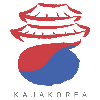Korean Lessons ᚛ Level 1 - My First Steps in Korean (Lessons 1 to 30) ᚛ Lesson 26 - The modifier -(으)ㄹ
The modifier -(으)ㄹ
In this chapter, we will study the modifier -(으)ㄹ. It is an ending that follows a verb and can be used in many different cases. The first one we will see is the future tense in the next chapter, but the modifier -(으)ㄹ is a verb form that we will use many times throughout our learning of Korean. It is therefore very important to master it.
General rule
In general, the modifier -(으)ㄹ is used as follows:
- If the stem of the verb ends in a vowel: [Stem]ㄹ
- If the stem of the verb ends in a consonant: [Stem]을
The verb 가다 (= to go) has the stem 가 which ends in a vowel. We therefore add ㄹ to it.
- 가다 → 갈
The verb 먹다 (= to eat) has a stem 먹 which ends in a consonant. We therefore add 을 to it.
- 먹다 → 먹을
Exception of verbs ending in ㄹ
For verbs whose stem ends in ㄹ, it is not necessary to add the modifier -(으)ㄹ, the stem is sufficient on its own:
[Stem]
The verb 살다 (= to live) has a stem 살 which ends in ㄹ. Nothing is added to it to get its -(으)ㄹ form.
- 살다 → 살
Exception of verbs ending in ㅂ
For irregular verbs whose stem ends in ㅂ, the modifier -(으)ㄹ is added as follows:
[Stem -ㅂ]울
The irregular verb 춥다 (= to be cold) has the stem 춥 which ends in ㅂ. We then remove the final ㅂ from the stem, 추, then add 울.
- 춥다 → 추울
Exception of verbs ending in ㄷ
For irregular verbs whose stem ends in ㄷ, the modifier -(으)ㄹ is added as follows:
[Stem -ㄷ]ㄹ을
The irregular verb 듣다 (= to listen / hear) has a stem 듣 which ends in ㄷ. We then remove the final ㄷ from the stem, 드, then we add ㄹ을.
- 듣다 → 들을
Exception of verbs ending in ㅅ
Learn more
Exception of verbs ending in ㅎ
Learn more
Summary table of structure
Learn more
Exercises
Learn more
This printable eBook teaches you Korean writing and includes more than 1,000 Korean vocabulary words divided into 40 categories. Each word comes with audio pronunciation recorded by native Korean speakers (no AI)!
On top of that, you’ll also get access to an online vocabulary learning tool based on the scientifically proven Leitner spaced repetition method.
Learn more

